C.S. Burrough's Blog, page 6
February 24, 2025
My review of Edward VI: The Lost King of England, by Chris Skidmore
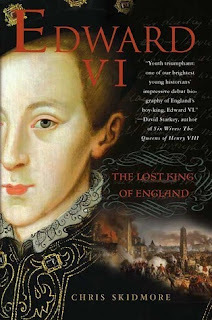
Chris Skidmore makes courageous choices addressing topics challenging due to limited popular appeal (his later book, Death and The Virgin, I thoroughly enjoyed). Edward VI's reign we see more through the prism of important religious development than being drawn to the boy king's persona. That's understandable, this being a short reign.
The obvious question is why this short reign is so eclipsed by 'Bloody' Mary I's even shorter one immediately following it? Answer: Mary was the first queen regnant, a mature and tormented woman with a dramatic personal history, a Catholic zealot who burnt heretics - for better or worse, a more colourful character to grasp.
Edward might have become a fascinating figure, but his meagre measure of life allowed little opportunity for noteworthy character building. Formidably well educated, he was also the first English monarch raised a Protestant. Intensely conscious of his status as God's anointed, he was pompous for his years, even castigating his much older intransigent half-sister Mary for flaunting her staunch Catholicism.
He conversely favoured his other half-sister Elizabeth, Mary's junior, who soundly rejected Catholicism.
He was similarly fond of his widowed stepmother Queen Catherine Parr, herself a keener reformist than her husband Henry VIII had been and who, in her early widowhood, married Edward's uncle Thomas Seymour, scheming brother of Lord Protector Somerset. This would have perplexed the boy, leaving him split around personal and official approval, family loyalty and royal favour.
Family rumour and scandal were persistently laid at Edward's feet, often intended to agitate the boy and tug at him to side with these incestuous court factions.
Touches of his tyrannical father glinted hopelessly through Edward's pasty adolescent veneer. He then became famously frail and sickly, confined and bedbound, more than ever under the spell of his scheming counsellors.
He expressed frustration by his powerlessness as a minor whose governing was done by a Regency Council while he, whose personal seal was required, felt personally responsible for so much. This primarily involved overseeing contentious religiopolitical completions his devout father had shied away from: despite his severance from Rome and Dissolution of Monasteries, Henry VIII had balked at extending his Church of England into one signifying a fully-fledged Protestant state. Responsibility fell into Edwards hands to add imperative final touches like abolition of the Mass and clerical celibacy, imposing compulsory services in English, etc.
These factors explain why Edward's reign is characterised and remembered through his advisors who steered such legislation, especially his Seymour uncle Edward, Duke of Somerset and then John Dudley, Duke of Northumberland. Orbiting him like vultures was a fractious cast of royals and nobles far more memorable than Edward himself because of their longer and more complex and sensational lives.
In his frailty, conscious of his own mortality, he became increasingly malleable and vulnerable to diplomatic pressure. From his deathbed he was easily persuaded to sign over his kingdom to his Protestant cousin Lady Jane Grey, daughter-in-law of Edward's de facto regent, the dynastically ambitious Protestant John Dudley, Duke of Northumberland whose persuasion centred on Edward keeping his 'bastard' half-sisters Mary and Elizabeth from ruling, the eldest especially, being herself Catholic. Regardless how easily persuaded, Edward would again have felt torn by family loyalty, religion and kingly duty in this final act, preparing to meet his maker.
It's a pity to then have him eclipsed in history by the 'nine days queen' episode of Jane Grey who usurped Mary only to be overthrown herself. Edward becomes almost forgotten due to Mary's 'bloody' reign and religious reversion to Roman Catholicism, her marriage to Philip of Spain, her persecution of her half-sister Elizabeth who was sent to the Tower and almost never lived let alone ruled. Mary's humiliating phantom pregnancy adds to her infamy, as does her begrudging bequeath of the crown to Protestant half-sister Elizabeth in the absence of offspring. The latter's subsequent eponymous golden age again hold's poor Edward's place back in the Tudor shadows, forever outshone by his mighty father and legendary siblings.
Not everyone's favourite reign to read on, this is important history to understand, contextually. Chris Skidmore has my greatest respect for taking on projects his more popular contemporaries veer away from to stay safely within the established bounds of popular reading.
This, like Skidmore's other above-mentioned book, is well researched, written and documented. I'd like to see more of his clever biographical ideas materialise.
My review of Possessed: The Life of Joan Crawford, by Donald Spoto

Donald Spoto is one of my favourite Hollywood biographers. I've read five Crawford biographies and find it impossible to rate one higher than the others. Inescapably, many details are rehashed across all of them. This one I liked slightly more than the others I've read. If I were recommending which ones to include in your coverage (there are so many), this would be near the top of my list.
Joan became such a contentious biographical topic in the aftermath of 'Mommie Dearest' that her apologists closed ranks and, understandably, became hyper-defensive, rallying to restore her good name - to such an extent that they sounded at times to collectively lose objectivity.
That's fine, any intelligent reader can see past this, we feel the passion of the authors which makes for good reading in itself.
I like to make my own mind up about the subjects of biographies and usually can.
That Joan Crawford was no saint becomes clear enough after covering a few biographies, that she was no monster either is also clear. She was a fascinating woman and a great, great star.
January 25, 2025
My review of Love and Louis XIV: The Women in the Life of the Sun King, by Antonia Fraser
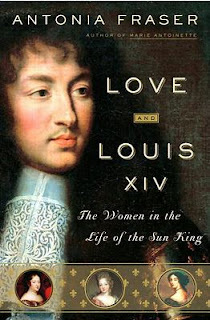
While Antonia Fraser is perhaps my all-time favourite biographer, certain of her subjects have not interested me greatly. This, in my opinion, is one of her best for its sheer literary quality.
I could happily soak up Lady Fraser's eloquence on any old thing. So, this not being my favourite or most familiar royal court or period, I relished the opportunity to read her elaboration on it, to gain insight into an epoch I have previously found drier and more awkward to penetrate than others.
I pride myself as an aficionado on other times and reigns while humbly conceding my novice status on this. Hence my need to be gently nurtured into it by fine, readable writing.
Fraser's considerate genealogical charts were also of immeasurable assistance as I flipped back and forth between text and reference to keep up with the many similar yet unfamiliar names.
This work stylistically transcends many of her others; she has matured so beautifully as a writer. Not since her 1969 Mary, Queen of Scots have I been so enraptured by her words, sentences and human insight - only this way have I learnt much history. It is ultimately, for this reader, the way the topic at hand is presented rather than the topic itself.
I spent weeks on this this. Can only compare it with immersing myself in the most splendidly sumptuous candlelit aromatic bath I've ever had. I re-emerged suitably enlightened, pampered and eternally grateful.
Not the most groundbreaking educational journey of my life, but remedial therapy of the highest order and an invaluable preliminary glimpse into what I still find a less fascinating world than medieval and Tudor England.
My review of Tigers are Better-Looking: With a selection from The Left Bank, by Jean Rhys
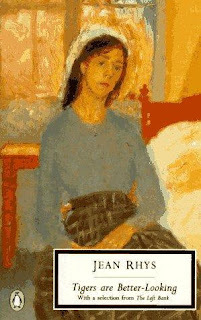
No Jean Rhys fan would want to let this priceless opportunity pass.
Included is her fateful, first ever published collection 'Stories from the Left Bank', a glimpse of the legend in the making, as a young aspiring novice writer - even then she had the intuitive brilliance that made her adored by her select, intimate following. That her lover Ford Maddox Ford originally published these was clearly no pillow favour - he genuinely saw a rare, unique voice that would echo down through the ages after he gave her that start.In these earliest of her efforts, which brought her by chance into the arms of her future mentor and lover and kicked off her literary career, we see into the Paris of the 1920s, with its cobblestoned roads, quaint streetlights, underground clubs, bars and restaurants and the English and American arts circles inhabiting this time and place alongside the city's gritty, colourful native characters.
The more modern stories, written in her maturing years, are equally fascinating albeit for different reasons, her voice having gained greater distinction, her take on life the same as ever and her heels dug relentlessly into her own deeply personal literary ground.
Breathtaking work by one of our most underrated English language greats, a writer decades ahead of her time who yanks at your heartstrings and screams into your ear with a polite, understated whisper.
Like every one of her books, I ached to keep reading and mourned pathetically after finishing it. So much so that I returned to it three times and it still sits in my cupboard awaiting its next round someday.
My review of Ball of Fire: The Tumultuous Life and Comic Art of Lucille Ball, by Stefan Kanfer

TV comedy mostly irritates me, with a few notable exceptions, one in particular being Lucille Ball.
She had that distinct something. I only needed look at her to be triggered into fits of belly laughter. It's a rare gift, we tend to think. But as with so many such greats, Ball's comedic craft was actually the result of decades of hard work. There was little spontaneity in what she excelled at, it was the product of gruelling repetition, so many times did she practice every smallest detail for any scene or sketch - frequently driving her fellow cast members to despair. Such is the requisite professional devotion shared by illusionists, mime artists, circus performers, speciality dancers and great singers.It brightened my week immensely reading about this fascinating, committed artiste who, in my toddlerhood, was portrayed by a tiny carrot-headed marionette dancing across my screen in sequins and high heels, in the opening credits. She was the only screen persona guaranteed to have me rolling around the carpet. Watching blurry old reruns still has the same effect on me, so timeless is the joy she invokes in the human psyche. Her apprenticeship involved learning on the job, on the pre-TV big screen, in supporting roles to legends like the Marx Brothers.
As an adult I've had passing opportunity to catch up on even her earlier work, which I'd missed out on watching her as I was growing up. It was therefore great to read the backstory of this entertainment history-making trailblazer, dubbed in an earlier Hollywood incarnation "Queen of the Bs".
A thorough, well written biography with great photographs.
My review of Elizabeth's Spymaster: Francis Walsingham and the Secret War That Saved England, by Robert Hutchinson
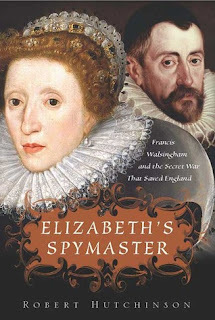
The icing on the cake for those hooked on Tudor history. This lurking figure has been portrayed as a sinister presence at Elizabeth's court, but one who saved her oft rocky reign from doom and disaster on many occasions. We learn more here about why Gloriana's reign involved such diplomatic intrigue and tightrope walking.
Walsingham's brilliant if callous ensnarement of Mary Queen of Scots, heading her entrapment and setting her up under escalating political necessity, is engrossingly fleshed out to the last detail in this biography. We also read of his intelligence operations penetrating foreign military preparation of the ultimately unsuccessful Spanish Armada.
Walsingham rose from near obscurity, albeit from a well-connected family of gentry. On leaving university aged twenty he travelled Europe before embarking on a career in law. Returning from self-imposed exile in France on Catholic Queen ('Bloody') Mary I's demise, he was elected to Elizabeth's first parliament in 1559. He became ambassador to France in the 1570s, witnessing the St. Bartholomew's Day massacre, an experience permanently reinforcing his anti-Catholic stance.
A high-profile pro-Protestant in a post-reformation England constantly threatened by reinstatement of Catholicism, he became one of an elite diplomatic inner circle.
His 'cabinet' directed the Elizabethan state and oversaw foreign, domestic and religious policy. As Elizabeth's principal secretary he supported exploration, colonisation, English maritime strength and the plantation of Ireland. He successfully worked towards uniting England and Scotland under one crown.
Readers of all things Elizabethan must surely cherish this book. Neither an especially charismatic nor sympathetic character to document, Walsingham is deftly humanised by the erudite Robert Hutchinson whose less florid narrative style than that of some 'popular historians' rewards the reading effort.
The crucial extra dimension for readers of this period.
My review of Brass Diva: The Life and Legends of Ethel Merman, by Caryl Flinn
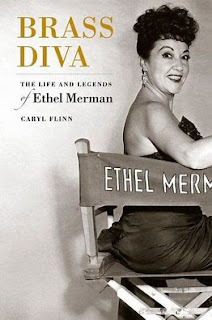
It was when I heard an old industry anecdote that I became as interested in the woman as 'that' voice I'd played over and over as a mere stagestruck slip of thing lip synching into a hairbrush in my bedroom mirror:
Scene:
Ethel Merman's dressing room.
Time:
Production briefing after first dress rehearsal.
Junior Producer (timidly, as he backs out of her door):
Oh, and what, um, were you thinking of ... doing with your hair, Ms Merman?
Ethel Merman:
Washin' it!
Needless to say, when I noticed this book luring me like a siren on a shelf, I snatched it away without hesitation.
This straight-talking stenographer from Queens, NYC, started out singing in 1920s midtown Manhattan clubs, after working her office day job. Inspired by vaudeville shows she watched as a youngster, at home she had practiced emulating the voices of stars like Fanny Brice and Sophie Tucker. Her own belting mezzo-soprano voice, however, turned out to be undisguisable.
As singers performed without microphones when Ethel started out, she had an advantage later. She famously never took a singing lessons and Broadway lore holds that George Gershwin advised her never to.
She became tagged the 'First Lady of musical comedy' after launching many now standard Broadway musical numbers, including showstoppers crafted for her by greats like Cole Porter and Stephen Sondheim.
Her signature repertoire included: 'I Got Rhythm', 'Everything's Coming Up Roses', 'Some People', 'Rose's Turn', 'I Get a Kick Out of You', 'It's De-Lovely', 'Friendship', 'You're the Top', 'Anything Goes' and her eventual theme song, 'There's No Business Like Show Business'.
Merman was one of a kind, salt of the earth, a grafter and a trooper who never lost touch with her humble origins. Even so, she paradoxically somehow became the ultimate Broadway diva. Like others before and since, she had earned this status, this special place in theatrical history and, once on her throne, she defended her creative prerogative as does a lioness her cubs.
This is a thorough, well penned biography, not a fast or trashy read. It gives an extensive history of an unlikely diva, including her formative phase, long before she had any inkling of her legendary destiny.
A great book about a fierce and funny woman you'd never want to have in your ear.
My review of Get Happy: The Life of Judy Garland, by Gerald Clarke
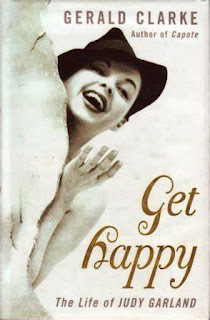
As irresistible as its subject, this fine biography had me grinning for weeks, occasionally gasping and, now and then, just a tad teary.
Much has been written about Judy Garland, some of it even true. This, however, is well documented material that we instinctively trust to be uninvented.
Judy's artistic and aesthetic insecurities sometimes robbed her from knowing how widely loved she was. Nor was this not uncommon Hollywood syndrome helped by her not uncommon addiction. She did, however, know deep down, which was how she was able to reach out and have live concert audiences eating from the palm of her hand right up to the end. Some fans turned on her as she unravelled, but more remained steadfast in their loyalty.
The little Francis Gumm and her performing vaudeville sisters had precarious moments in what now, in retrospect, appears an earthy, well rooted professional start. They learned the ropes, on the job, from being knee high.
When Judy went on to Hollywood and attended school with other young aspirants, she was the ugly duckling of the class and never really forgot that. Of course, we see her as beautiful in many of her big screen hits, but she was 'different' in her beauty. (So many demographics related to this.)
Her common touch was priceless, her voice incredible. When Fred Astaire called her 'the greatest entertainer who ever lived' he was not consciously exaggerating. We assume she never got to hear those kind words.
Judy won a Juvenile Academy Award, a Golden Globe Award, Grammy Awards and a Special Tony Award. She had Academy Award nominations for Best Actress in the remake of A Star Is Born (1954) and Best Supporting Actress in Judgment at Nuremberg (1961). She remains the youngest recipient (at 39) of the Cecil B. DeMille Award for lifetime achievement in the motion picture industry. She was posthumously honoured with a Grammy Lifetime Achievement Award in 1997.
We wonder whether she'd have laughed out loud at suggestions that her demise was the final straw that triggered the Stonewall riots, giving rise to the modern gay liberation movement. Or whether she'd have been flattered.
Her legacy includes the precious recordings of her legendary singing and films - not to mention some pretty legendary offspring. And to help cement that legacy is this decently penned biography, to hopefully put lesser, more gossipy works back where they belong.
December 30, 2024
My review of Wide Sargasso Sea, by Jean Rhys
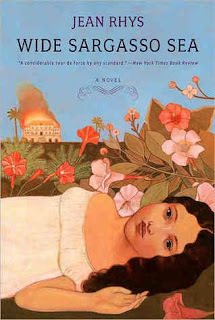
Let me first say that this literary masterpiece deserved every last ounce of global acclaim that it won - so special that no film adaptation has come anywhere near to the book. This is the perfect novel, in form, in cadence, in concept. Pure magic.
That said, this glittering tome is my least favourite, plot-wise, of Jean's novels. Maybe because it is a standalone, with little in common with any of her other, less appraised works.
She herself saw the irony that this atypical epic, published in her dotage, from handwritten scrawl, was what it took to deem her a literary luminary. Of all the plaudits and her prestigious literary award, she said only, in pure Jean Rhys form: 'It came too late.' Only her old cult following could appreciate this understatement. For too many long decades she had been unfairly underestimated and shunned by highbrow critics and readership masses alike.
Rhys had lived in obscurity for decades after her previous work, Good Morning, Midnight, was published in 1939, with publishers presuming her dead. Wide Sargasso Sea, her astonishing and unanticipated comeback, became her most successful novel, winning her the 1967 WH Smith Literary Award, and seeing her later appointed a Commander of the Order of the British Empire (CBE).
A prequel to Charlotte Brontë's Jane Eyre, this is the backstory of Antoinette Cosway, a white Creole heiress, from the time of her Caribbean youth to her unhappy marriage to an unnamed English gentleman (implied as Jane Eyre's 'Mr. Rochester'). The story elaborates on how her captor-husband came to move Antoinette to England, rename her Bertha, falsely declare her insane and lock her away in his attic, where she then actually descends into madness.
Rhys uses multiple narrative voices (Antoinette's, Rochester's, and Grace Poole's), masterfully merging this plot with that of Jane Eyre. For the most part, however, protagonist Antoinette relates her life story from colonial childhood, to arranged marriage, to her attic room confines under servant Grace Poole's watch in [Rochester mansion] Thornfield Hall.
The novel begins circa 1834 after the Abolition Act ended slavery in the British Empire. Part One, set in Jamaica's Coulibri, is narrated by Antoinette who reflects, fragmentally, on her childhood, her mother's mental instability and her mentally impaired brother's tragic death.
Part Two alternates between perspectives of Antoinette and her unnamed English husband during their honeymoon in Dominica's Granbois. Antoinette's childhood nurse, Christophine, travels with the newlyweds as servant. We witness the advent of Antoinette's mental downfall after her husband receives a malicious blackmailing letter from one Daniel, an acquisitive native, demanding hush money and claiming to be Antoinette's distant illegitimate brother. For good measure, Daniel also alleges Antoinette carries a hereditary half-madness.
Loyal Christophine, resenting the groom's semi-belief in Daniel's crazed claims, aggravates matters with her open hostility. Perplexed and frustrated, Antoinette's new husband, feeling alienated in this foreign land, eventually lashes out, becoming openly unfaithful to his bride. Our heroine's swelling paranoia and despair at her failing marriage unbalance her already frail emotional state.
Part Three, the novel's shortest section, is from the perspective of Antoinette, now renamed Bertha. She is confined in the attic of Thornfield Hall which she calls the 'Great House'. We follow her relationship with servant-guard Grace Poole, as Antoinette's captor-husband hides her from the world. Promising to see her more, he pursues relationships with other women (eventually with his new young governess, Jane Eyre). In a final act of despair, Antoinette/Bertha decides to take her own life.
Her magnum opus, this is not your typical Jean Rhys, not that younger, wilder Jean her select following knew and loved, but it has nevertheless been justifiably hailed as one of the most important works of English literature ever penned.
Anyone who reads would be a fool to pass on this one.
My review of Letters 1931-1966, by Jean Rhys, Francis Wyndham (Editor), Diana Melly (Editor)
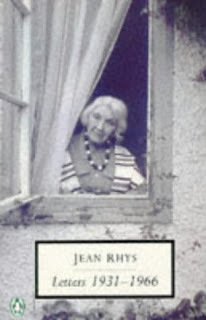
I was bought this as a birthday gift by someone who knew my fanaticism for Jean Rhys. This intimate glimpse into the personal comments of my all-time favourite writer had me mesmerised from start to finish.
The letters include those from 1931, when she was recently estranged from her first husband French-Dutch journalist-songwriter (and spy) Jean Lenglet. Jean was still enjoying the acclaim of her first three books, The Left Bank and Other Stories (1927) Postures/Quartet (1929) and After Leaving Mr. Mackenzie (1931).
Like a fly on Jean's various walls, we watch her bumpy life unravel until the 1966 death of her of her third and final husband, solicitor Max Hamer, who had spent much of their marriage jailed for fraud. Jean was now a frail old woman reduced to a life of obscurity, alone in her ramshackle West Country home. Publicly long forgotten and presumed dead, her books were mostly out of print.
She was, however, on the brink of major rediscovery with the publication of Wide Sargasso Sea, which she had spent years drafting and perfecting. Unlike any of her earlier works, this final tome was a fictional perspective of the 'madwoman in the attic' from Charlotte Bronte's Jane Eyre. It would win Jean the prestigious 1967 WH Smith Literary Award, of which she famously said: 'It has come too late'.
Like all Jean's penned words published or not, this is like sitting all alone with her, listening to a voice that speaks only the pure, haunting truth.
A remarkable, intimate journey through her life that validates and authenticates the integrity of everything she had published and explains so much more about her than we, as diehard fans, could have known.
The most beautiful birthday gift I was ever given. Truly. It will never be allowed out of my house.
As an afterthought, it's interesting that those reviewers who don't "get" the Jean Rhys letters tend to be American, whereas those who do appear to be British.



